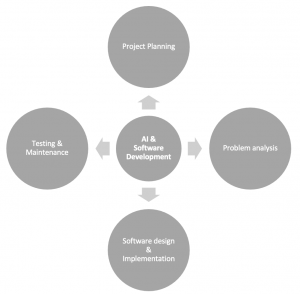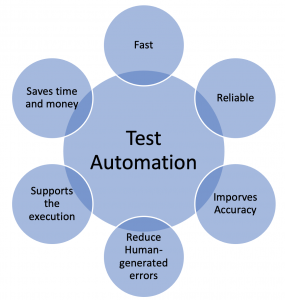Benefits & Challenges of Software Development with Machine Learning
Software development with machine learning involves using ML algorithms and techniques to build software applications. These applications can range from simple data analysis and prediction tools to more complex systems such as image recognition, natural language processing, and autonomous systems. The process of developing such software typically involves the collection and cleaning of data, selecting and training models, evaluating performance, and deploying the final product.
Several benefits are associated with software development, such as:
Automation and improved efficiency: ML models can automate tasks that would be time-consuming or difficult for humans to perform, such as image recognition or natural language processing. This can lead to improved efficiency and cost savings.
Increased accuracy: ml models can achieve higher levels of accuracy than traditional software in tasks such as prediction and classification.
Handling big data: ML models can handle and process large amounts of data, making it possible to extract insights and identify patterns that would be difficult or impossible to detect manually.
Personalization: ML models can be trained on individual user data, making it possible to personalize recommendations and experiences.
Real-time decision-making: With the development of edge computing, ML models can make decisions in real time, enabling the development of applications such as autonomous vehicles, robots, and IoT devices.
Innovation: Using ML models and techniques opens doors for new possibilities, which can lead to the development of new products, services, and business models.
Overall, software development with ML offers the potential for significant advancements in automation, accuracy, and efficiency in a wide range of industries and applications.
But, while there are multiple benefits of software development with ML, there are also some challenges that may arise:
Data availability and quality: ML models require a large amount of high-quality data to train and test on. If data is not available or is of poor quality, this can make it difficult to develop accurate models.
Model selection and tuning: There are many different ML algorithms and models to choose from, and selecting the right one for a given task can be challenging. Additionally, fine-tuning the parameters of a model to achieve optimal performance is a time-consuming process.
Overfitting: Overfitting occurs when a model is trained too well on the training data and does not perform well on new, unseen data. This can be a common problem and can be addressed using techniques such as cross-validation and regularization.
Explainability: Some ML models, such as deep neural networks, can be difficult to interpret and understand. This can make it challenging to explain how a model is making its predictions and to identify any potential biases in the data.
Deployment and maintenance: Deploying ML models in production environments can be complex and requires specialized knowledge. Additionally, these models need to be continuously updated and maintained as the data and requirements change over time.
Ethical concerns: There are many ethical concerns that arise when using ML such as bias, transparency, and accountability. It’s important to consider these concerns when developing and deploying such models.
ML is becoming increasingly popular in many industries and is expected to have a significant impact on the economy in the near future. In general, ML and AI are considered to be one of the most promising fields in technology and key driver of digital transformation and innovation. As companies are investing in this technology to improve their products and services, automate tasks, and gain a competitive edge. And this is across different industries such as healthcare, finance, retail, logistics, and manufacturing.
According to a report by the Belgian government, the AI market in Belgium is expected to grow rapidly in the next few years, with the government investing heavily in research and development in this field. VLAIC, aka AI research center Vlaamse AI-coalition, is an initiative from the Flemish Government to support the development and use of Artificial Intelligence (AI) in Flanders, Belgium. The goal is to make Flanders a leading region in AI by 2025.


